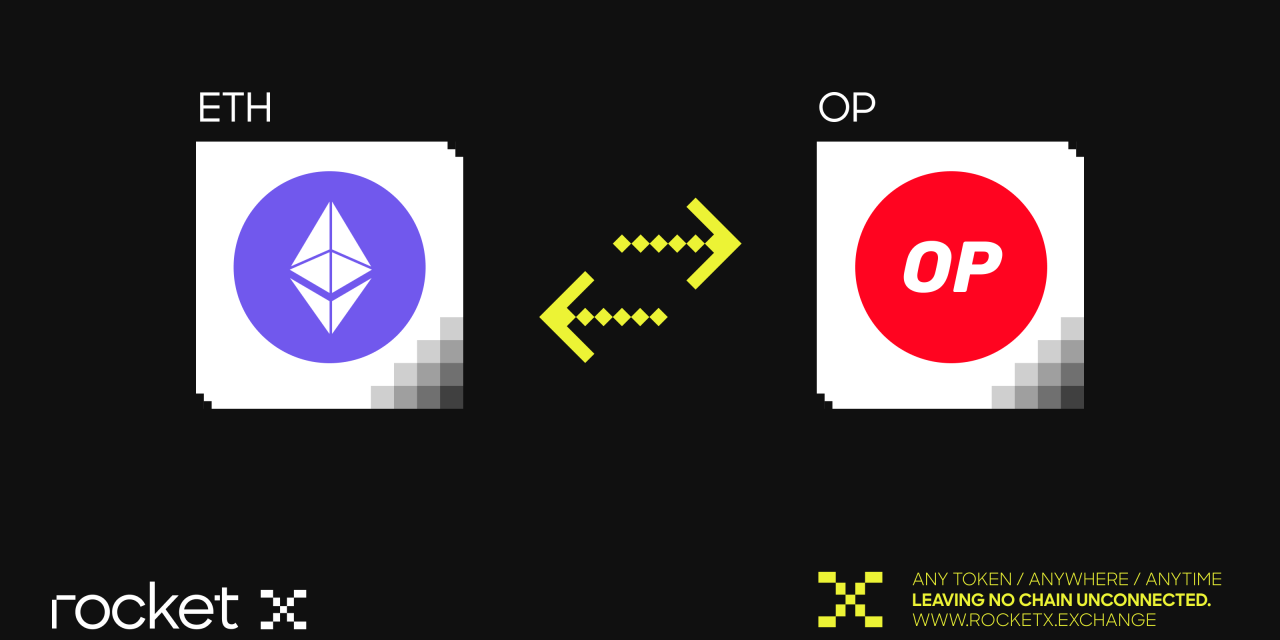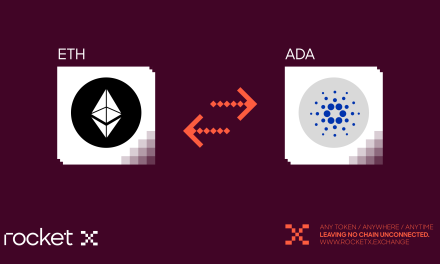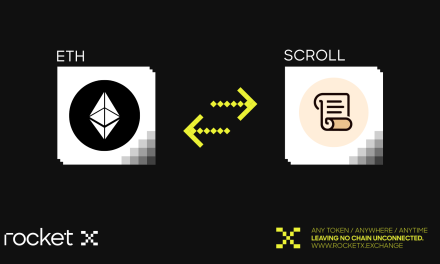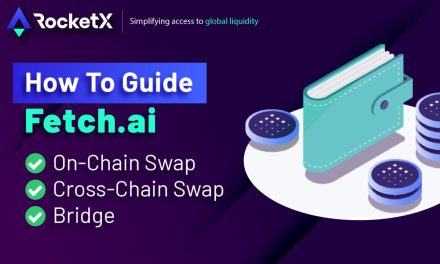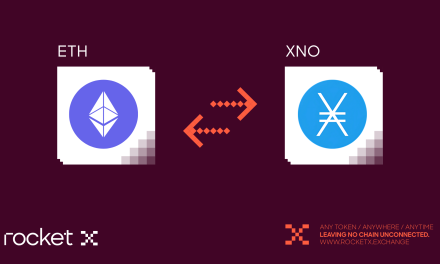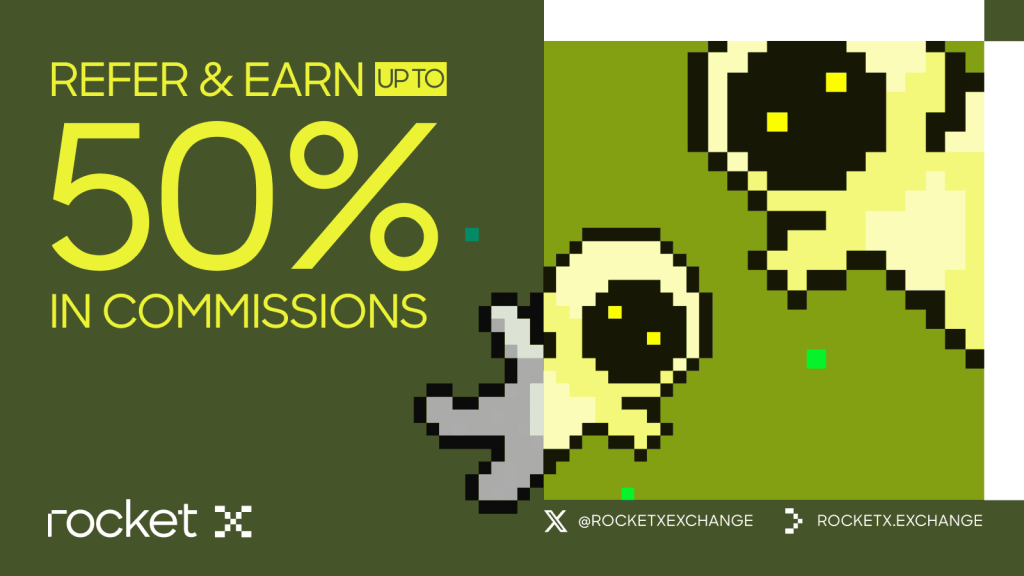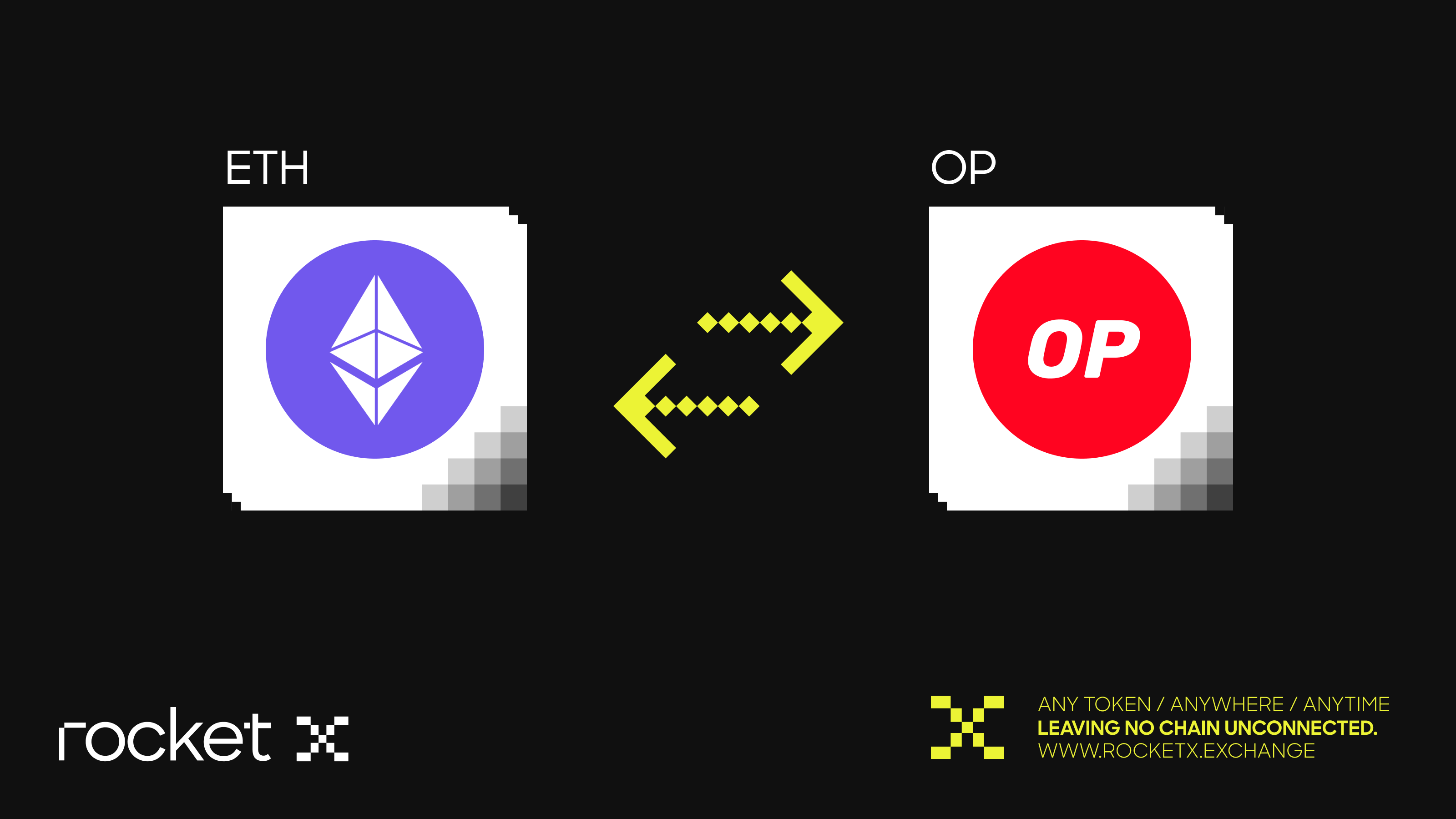
Introduction
The Optimism network has evolved into one of Ethereum’s most powerful and forward-thinking Layer-2 ecosystems. Built on optimistic rollups and the modular OP Stack, it delivers low-cost, high-speed transactions while maintaining Ethereum’s security. But today, Optimism is no longer just a single chain—it’s the foundation of a thriving Superchain of interoperable OP Chains, including major networks like Base, World Chain, and Unichain.
This transformation is reshaping the future of on-chain apps, enabling scalable, EVM-compatible Layer-2s to work together under a shared ecosystem. Whether you’re a developer, DeFi user, or NFT collector, the Superchain opens up unprecedented flexibility, speed, and liquidity.
In this guide, we’ll break down how Optimism works, explore the OP Stack and Superchain architecture, highlight key OP Chain adoptions, review the $OP token utility, and most importantly—show you how to bridge your assets to Optimism using RocketX Exchange, the most powerful cross-chain aggregator supporting nearly 200 blockchains.
What is Optimism Network
Optimism is a Layer-2 blockchain built on Ethereum, designed to offer faster and cheaper transactions through a breakthrough scaling technology called optimistic rollups.
Launched in 2021, Optimism began as a standalone L2 (now referred to as OP Mainnet), but by 2025, it had evolved into the Superchain—a dynamic network of OP Stack-based Layer-2 chains, including Base, World Chain, Zora, and more. These chains inherit Ethereum’s trust while offering unmatched flexibility and scalability.
Today, Optimism powers hundreds of DeFi protocols, NFT marketplaces, games, and on-chain social platforms—all with ultra-low fees and sub-second finality. It’s not just a blockchain; it’s the foundational layer of Ethereum’s multi-chain future.
Whether you’re exploring the OP token, looking to bridge your assets from Ethereum to Optimism, or building your own L2 with the OP Stack, Optimism offers a vibrant, secure, and future-ready ecosystem that keeps getting stronger.
How Optimism Uses Optimistic Rollups
At the core of Optimism’s speed and efficiency lies a breakthrough Layer-2 scaling method called optimistic rollups. Unlike the Ethereum mainnet, which executes every transaction one by one, Optimism batches thousands of transactions off-chain and posts them to Ethereum in compressed form. This reduces gas fees, unburdens Ethereum, and enables near-instant finality for users.
The word “optimistic” refers to a clever assumption: all transactions are valid unless proven otherwise. Validators monitor these batches, and if no one submits a fraud-proof during the challenge window (usually 7 days), the data is finalized on Ethereum. This mechanism ensures Ethereum-level security while slashing costs by up to 90%.
Optimistic rollups make transactions cost just a few cents, with dApps enjoying high throughput and low latency—perfect for DeFi, NFTs, and gaming.
However, it’s important to note: withdrawals from Optimism Network to Ethereum take longer due to the fraud challenge period. That’s why bridging via platforms like RocketX Exchange is a smart alternative, letting you cross-chain swap or bridge assets instantly across 190+ supported networks.
This architecture is what powers the OP Stack and has laid the foundation for the booming Superchain—a future where chains collaborate rather than compete.
Understanding the OP Stack and the Superchain Vision
The OP Stack is Optimism’s open-source, modular framework that allows anyone to build scalable, Ethereum-compatible Layer-2 chains with ease. Think of it as a blockchain-in-a-box — a plug-and-play kit comprising execution, settlement, consensus, and data availability layers. This structure makes the OP Stack highly composable, developer-friendly, and ideal for launching new chains with Ethereum security and low fees.
But the OP Stack isn’t just about infrastructure — it’s the backbone of the Superchain, Optimism’s bold vision for a unified Layer-2 ecosystem. Rather than siloed rollups, the Superchain connects a growing number of OP Stack-powered chains that interoperate, share liquidity, and coordinate governance — all under one economic umbrella.
Each of these OP Chains — like Base, World Chain, and Blast — aligns with the Optimism Collective and contributes a portion of its sequencer revenue to fund public goods. This creates a positive feedback loop: the more chains built on the OP Stack, the stronger the Optimism network becomes.
In 2025, the Superchain is no longer just a concept — it’s a thriving network with over 40 active chains, handling more than 60% of Ethereum’s L2 transactions. With new rollups launching monthly and tools like RocketX enabling seamless bridging across them, Optimism is shaping the future of modular blockchains and shared Layer-2 economies.
Superchain Adoption: Base, World Chain & Beyond
Built on the OP Stack, dozens of specialized OP Chains are now live, each serving unique communities while remaining connected through Optimism’s shared infrastructure.
Base, launched by Coinbase, has become the flagship OP Chain. In 2025, it consistently ranks among the most active Ethereum Layer-2 networks, boasting over $10 billion in total value locked (TVL) and millions of monthly active users. Its deep liquidity, low fees, and tight integration with Coinbase’s exchange make it a core driver of Superchain growth.
World Chain, developed by Worldcoin, focuses on human verification and identity. By prioritizing transactions from real, verified humans, it’s onboarding millions through the World App and cementing itself as a unique on-chain identity layer for the Superchain.
Other OP Stack success stories include Blast, which gained rapid adoption through yield farming incentives; Unichain, Uniswap’s dedicated OP Chain; and Soneium, Sony’s blockchain for Web3 entertainment. Even exchanges like Kraken are entering the Superchain with their own OP Chains, showing that OP Stack scalability appeals to both Web3-native and traditional players.
With over $18 billion secured across all OP Chains and growing adoption from both major brands and indie developers, the Superchain is proving that modular, interoperable Layer-2 networks are the next big leap for Ethereum scalability.
OP Token Explained: Use Cases, Tokenomics
The OP token lies at the heart of the Optimism ecosystem. Though it started as a governance asset, it has evolved into a powerful tool for scaling Ethereum—fueling decentralized coordination, rewarding participation, and aligning the broader Superchain of OP Stack-based Layer-2 chains.
Use Cases of the OP Token
- Decentralized Governance:
OP holders help shape the future of Optimism through the Optimism Collective, a dual-governance structure:
- Token House – Votes on protocol upgrades, funding, and ecosystem policies.
- Citizens’ House – Focuses on public goods funding and long-term ecosystem development.
The Security Council also plays a role in safeguarding the network by overseeing critical upgrades.
- Ecosystem Incentives:
OP is actively distributed through:
- Builder Grants to support dApp and infra development.
- Airdrops for early users and contributors.
- Liquidity Mining on DeFi protocols like Velodrome, encouraging activity through OP rewards.
- Superchain Alignment:
OP token grants incentivize partner chains like Base and World Chain to align economically with Optimism—sharing sequencer revenue and contributing back to public goods.
OP Tokenomics: Supply & Distribution
- Total Supply: 4.29 billion OP
- Max Supply: 4.29 billion OP
- Circulating Supply: ~1.65 billion OP
OP distribution is gradual with no fixed inflation. Around 19% is allocated to user airdrops and ecosystem rewards, while additional funds support governance, retroactive public goods, and Superchain partnerships. Community governance via the Token House determines future distribution schedules.
In essence, OP is more than just a token—it’s a tool to scale Ethereum collaboratively, reward meaningful participation, and fuel the long-term success of the Optimism Superchain.
Disclaimer: This article is for informational purposes only and does not constitute financial advice. We are not promoting or recommending the OP token as an investment. Always do your own research before making any financial decisions.
How to Buy OP Tokens or Bridge Assets to Optimism
Looking to access the Optimism ecosystem? The easiest way to buy OP tokens or bridge your assets to the Optimism network is by using RocketX Exchange, a non-custodial, cross-chain aggregator that supports over 190+ blockchains and thousands of tokens.
Here’s a step-by-step guide to get started:
Step 1: Visit RocketX
Go to app.rocketx.exchange. No download or registration is required—just connect your wallet and go.
Step 2: Connect Your Wallet
Select a supported wallet such as MetaMask, WalletConnect, or Coinbase Wallet—depending on the blockchain you’re bridging from. Make sure it’s compatible with your source network so that RocketX can access your balances and execute the bridge to Optimism smoothly.
Step 3: Choose Source Network and Token
Select the network your assets are on (Ethereum, BNB Chain, Polygon, etc.) and the token you wish to bridge (e.g., USDT, ETH). Enter the amount and ensure you have enough native tokens to cover gas fees.
Step 4: Select Optimism Network as Destination
Set Optimism as your target network. You can bridge into the same token—or swap into a different one, like USDT to OP—directly during the process. RocketX auto-selects the best route and shows a live quote.
Step 5: Enter the Amount and Review the Quote
Once you’ve chosen your source network and destination (Optimism), enter the exact amount of the token you want to bridge. You’ll instantly see a live quote showing how much you’ll receive on the Optimism network, estimated gas fees, bridge fees, and the route RocketX will use.
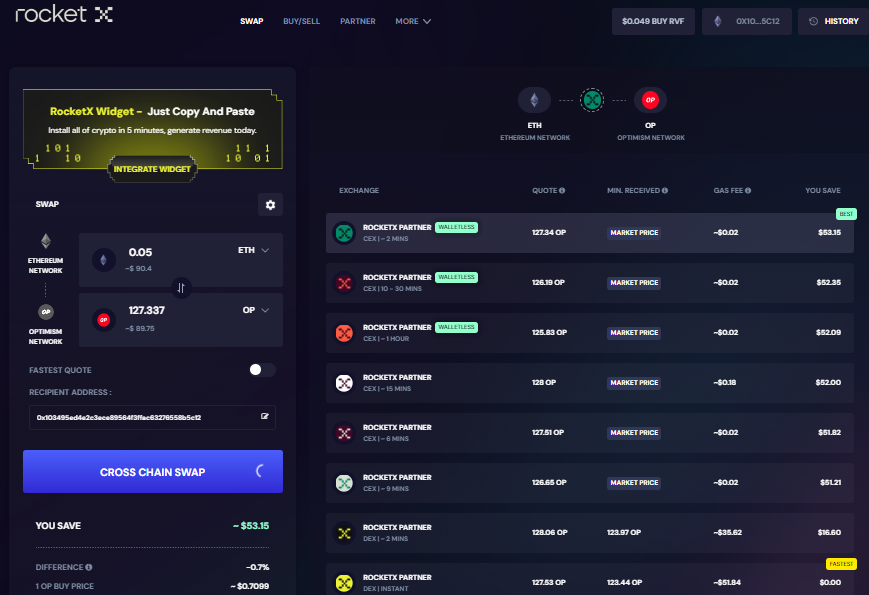
Step 6: Approve and Confirm
Check all the details: output amount, gas fees, and route. Once satisfied, hit “Cross Chain Swap”, approve the token in your wallet (if prompted), and confirm the transaction.
Step 7: Done!
In just a few minutes, your tokens will arrive on Optimism. Switch your wallet to the Optimism network and verify your balance—or use Optimistic Etherscan to track your transaction.
Want to see the process live? Watch our bridging tutorial for Optimism network now on YouTube.
Conclusion
Optimism has moved far beyond being “just a Layer-2.” With its OP Stack-powered Superchain, it’s redefining how Ethereum scales — enabling dozens of interconnected chains, shared liquidity, and a thriving multi-chain economy. From powerhouse projects like Base and World Chain to emerging OP Chains pushing innovation, the ecosystem is growing at an unstoppable pace.
If you want to take part in this growth, the first step is getting your assets onto Optimism — and that’s where RocketX Exchange comes in. As the only hybrid aggregator that supports nearly 200 blockchains, RocketX makes bridging fast, secure, and cost-efficient, whether you’re moving ETH, USDT, or OP itself.
No multiple tabs. No guessing the best route. Just one seamless transaction that gets you from your current chain to Optimism in minutes.
Start bridging with RocketX today and plug into the heart of Ethereum’s next-generation scalability.

